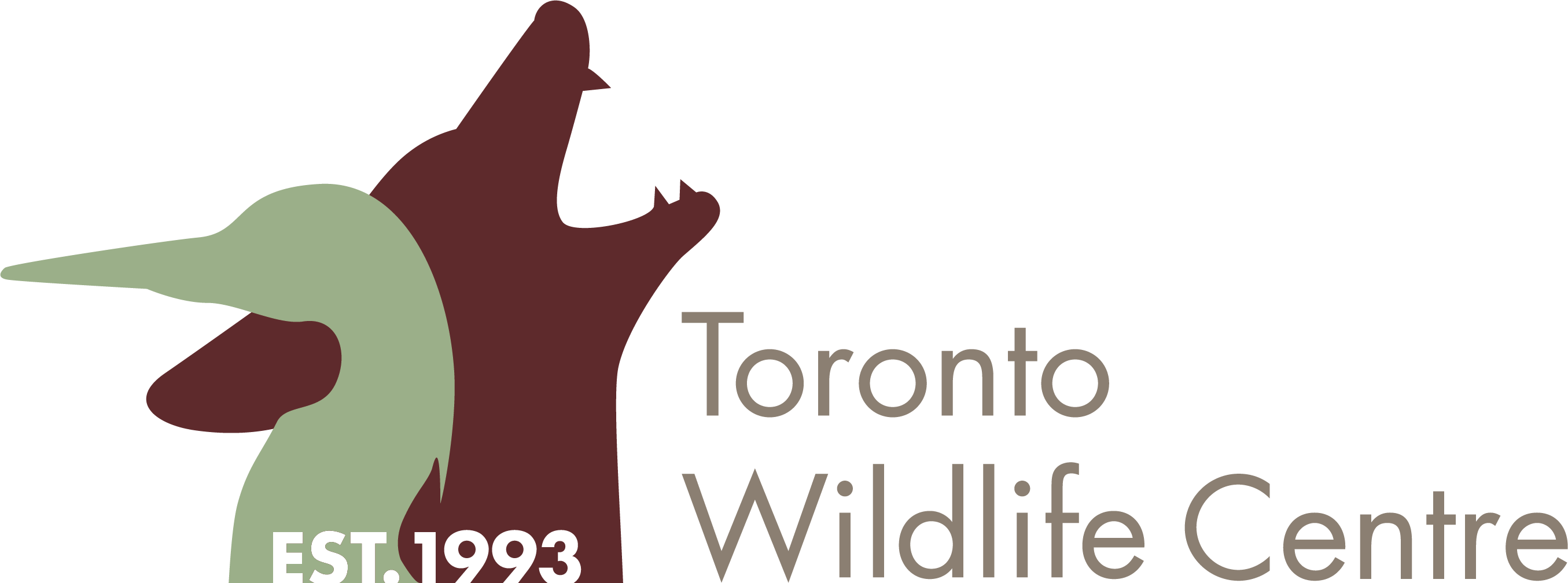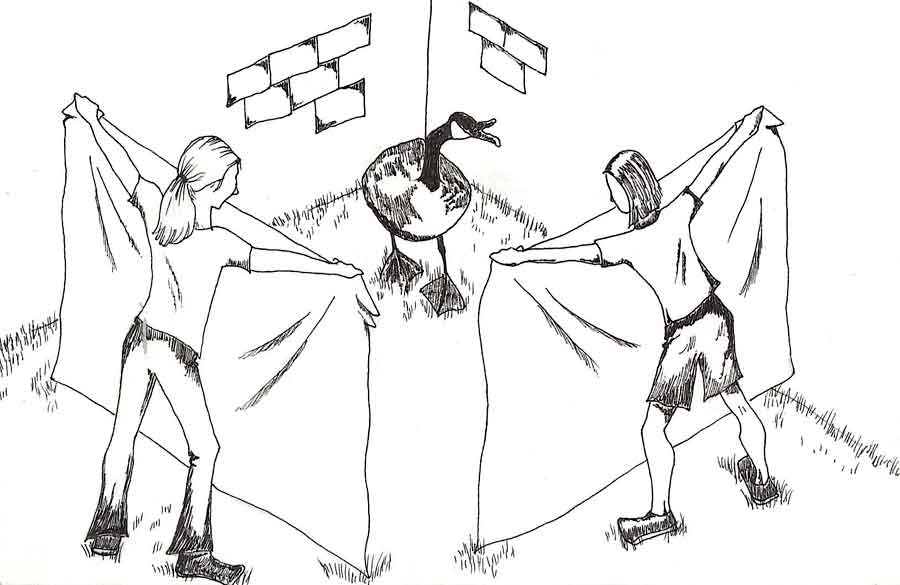How to contain a large bird
You will need:
- a container big enough for the bird to fit inside: a large cardboard box, a big rubbermaid tote, a recycling bin, a garbage can, or a dog kennel or crate
- a large towel, a blanket, or a bedsheet (in a pinch, a jacket or a sweater will do!)
Approach the bird calmly and quietly. Once you’re close enough, toss the towel over its body, making sure to cover its head and eyes. If the bird is still able to walk or run, you may need to corral it into a corner by a fence or building before you can get close enough.
Pick the bird up holding its wings to its body, place it in the container you’ve prepared, and close or cover the container. OR place the container you’ve prepared over the bird and slide a piece of plastic or cardboard underneath, like you would to catch a spider. Once the container is secure, put it in a dark, quiet place (a closet or heated garage is perfect!) and contact a wildlife rehabilitator.
If the bird is near a body of water and keeps swimming away, or if the bird is still able to fly but you’re sure it needs help, contact a wildlife rehabilitator for advice. They can give you species-based tips and tricks, or talk you through a tricky rescue.


